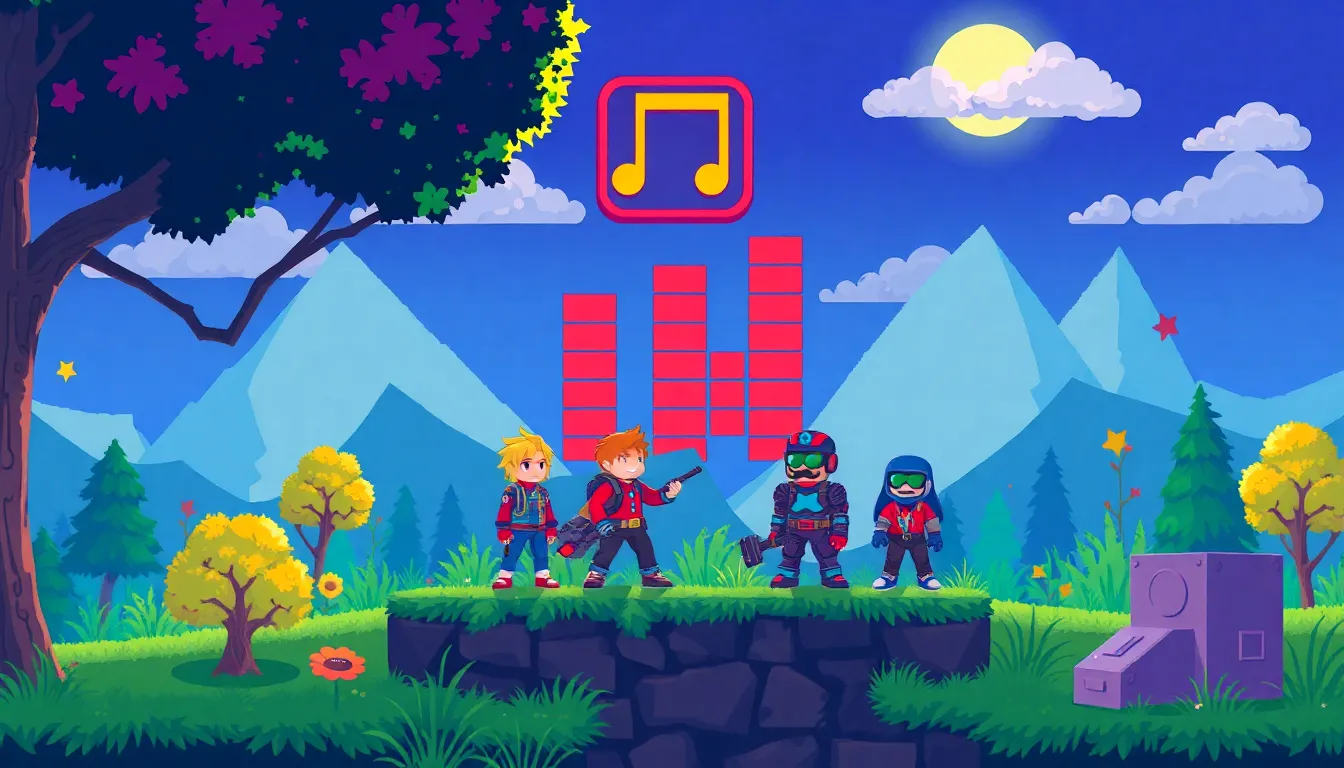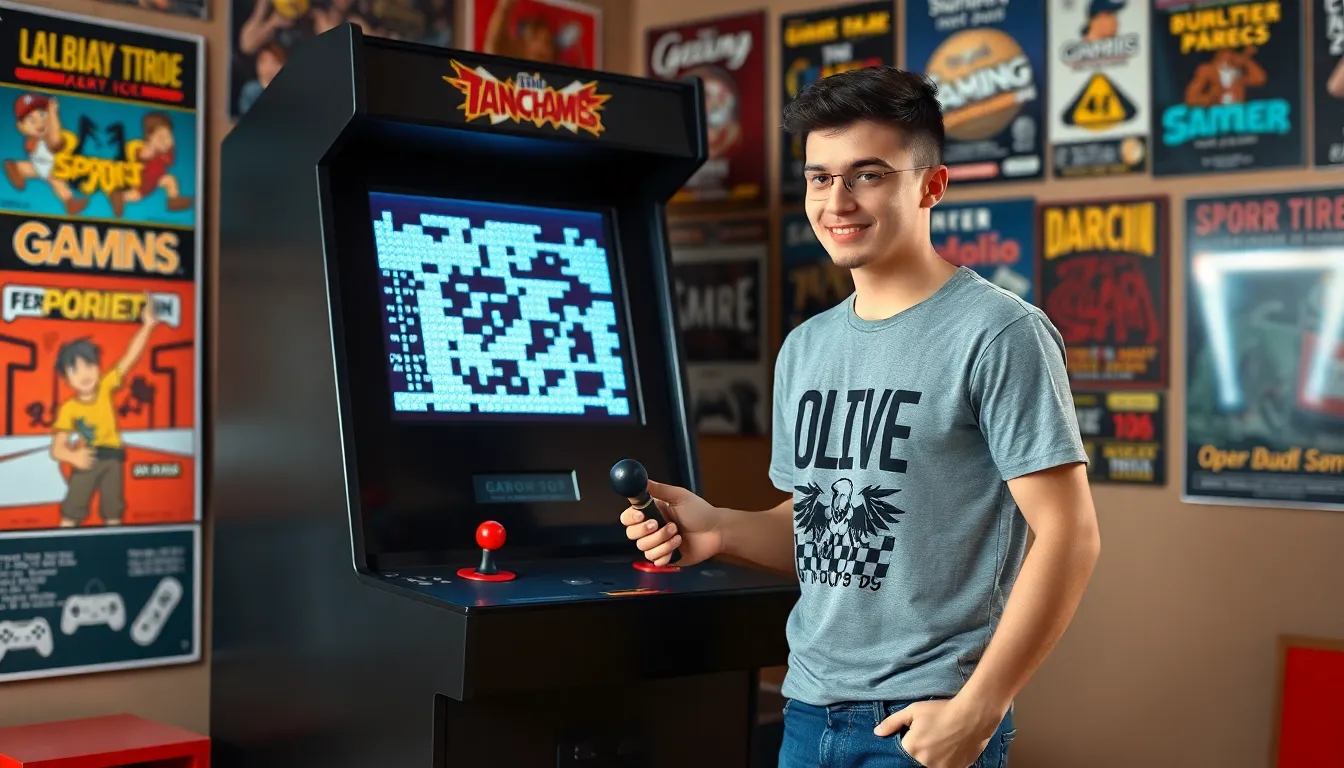In a world dominated by hyper-realistic graphics and complex gameplay mechanics, retro game design offers a delightful trip down memory lane. It’s like finding an old mixtape buried in your attic—nostalgic, charming, and just a bit quirky. Retro games remind players that sometimes less really is more, proving that pixelated graphics and simple controls can still pack a punch.
Table of Contents
ToggleOverview Of Retro Game Design
Retro game design emphasizes creativity and innovation through simplicity. Early video games often featured pixelated graphics, which became iconic for their charm. Contrast exists between these older designs and today’s hyper-realistic gaming experiences, highlighting the appeal of nostalgia.
Developers used limitations to their advantage, crafting engaging stories within small memory spaces. Players appreciated intricate gameplay mechanics, which often required strategy rather than brute force. Popular elements such as 8-bit soundtracks added to the immersive atmosphere and created memorable gaming experiences.
The aesthetic of retro games evokes fond memories for many players. Nostalgic visuals draw in those who grew up during the 80s and 90s, allowing them to connect with familiar styles. Simple controls offer accessibility, attracting newer generations of gamers who may find complex modern gameplay overwhelming.
Crafting retro-inspired titles allows developers to tap into a growing market. Indie games frequently embrace retro design elements, contributing to the resurgence in popularity. Unique concepts and creative constraints lead to fresh gameplay experiences, enriching the gaming landscape.
Emphasizing community also plays a vital role in retro game design. Gamers often bond over shared experiences, whether through discussing favorite titles or collaborating on fan projects. This sense of community fosters a deeper appreciation for the art form, encouraging players to explore and celebrate the history of gaming.
Key Characteristics Of Retro Games

Retro games stand out due to their unique design elements and nostalgic qualities. Distinct characteristics define this genre, appealing to various players across generations.
Pixel Art Style
Pixel art style defines the visual aspect of retro games. Creators used limited color palettes to craft simple yet effective game graphics. Each pixel contributes to the overall aesthetic, fostering a recognizable charm. Iconic characters and environments arise from this simplicity, instilling a sense of nostalgia. Many indie developers embrace pixel art, drawing inspiration from classics while introducing fresh concepts. The visual clarity facilitates easy recognition and engagement, making gameplay accessible for all ages.
8-Bit and 16-Bit Soundtracks
8-bit and 16-bit soundtracks enhance the immersive experience in retro games. Chiptune music, characterized by synthesized sounds, evokes powerful memories for players. Many soundtracks feature catchy melodies that stick in players’ minds long after gameplay. Nostalgic tunes often accompany memorable scenes, heightening emotional connection. Extra layers of complexity emerge through the combination of rhythms and melodies, allowing players to further engage with the game’s world. Many modern developers integrate these sound styles into new titles, ensuring the retro sound resonates with audiences today.
Influences Of Retro Game Design
Retro game design thrives on nostalgia, forging a cultural impact that resonates across generations. Players often reminisce about their childhoods when engaging with these charming titles.
Nostalgia And Cultural Impact
Nostalgia plays a pivotal role in the allure of retro games. Many players associate these games with fond memories from their youth, fostering a sense of comfort. Cultural references embedded in these games, like pixelated characters and catchy soundtracks, resonate deeply with audiences. Generational connections also emerge as younger gamers discover these nostalgic titles, often through parents or older siblings. These games not only revive fond memories but also attract a new audience, creating vibrant gaming communities dedicated to celebrating retro experiences.
Technological Limitations
Technological limitations significantly shaped retro game design. Hardware constraints pushed developers to craft innovative gameplay mechanics with creative storytelling. Limited color palettes prompted iconic graphics that remain memorable today. Developers focused on accessibility, ensuring players could quickly grasp mechanics while enjoying the challenge. These constraints inspired problem-solving, showcasing that ingenuity often arises from necessity. As modern developers embrace these foundational aspects, they honor the legacy of retro games while forging new paths in gaming design.
Modern Adaptations Of Retro Game Design
Modern adaptations of retro game design breathe new life into classic concepts, capturing the essence of nostalgia while catering to contemporary audiences. Various developments in this realm reflect a blending of old and new gaming styles.
Indie Game Revivals
Indie game revivals exemplify the popularity of retro aesthetics. Developers often draw inspiration from classics, creating titles that embrace pixel art and straightforward mechanics. Games like “Shovel Knight” and “Hollow Knight” highlight this trend, combining retro visuals with modern gameplay innovations. Indie studios leverage limited budgets to produce engaging experiences that resonate with nostalgic players. These games tap into the charm of their predecessors while introducing unique twists, ensuring they attract both veteran gamers and newcomers alike. Community support bolsters these ventures, strengthening the bond between developers and players who appreciate retro flair.
Remakes And Remasters
Remakes and remasters of classic games serve to revive beloved titles for modern platforms. These projects not only enhance graphics but also adjust gameplay to meet current standards. Notable examples include “Final Fantasy VII Remake” and “Resident Evil 2,” which reintroduce iconic stories and characters with updated visuals and mechanics. Developers prioritize fidelity to the original while modernizing aspects that enhance user experience. Improved controls and expanded narratives cater to both loyal fans and new players. These adaptations honor the legacy of retro design while ensuring accessibility in today’s gaming landscape. Players benefit from the nostalgia along with the refinement of gameplay.
Retro game design continues to hold a special place in the hearts of gamers. Its unique blend of simplicity and creativity not only sparks nostalgia but also fosters a sense of community among players. As modern developers draw inspiration from these classic elements, they breathe new life into beloved concepts while appealing to both seasoned fans and newcomers.
The charm of pixel art and catchy soundtracks remains timeless. These characteristics not only enhance gameplay but also create lasting emotional connections. By embracing retro aesthetics and innovative mechanics, the gaming industry honors its roots while paving the way for exciting future experiences. Retro games remind everyone that sometimes less truly is more, proving that the essence of gaming lies in creativity and connection.

